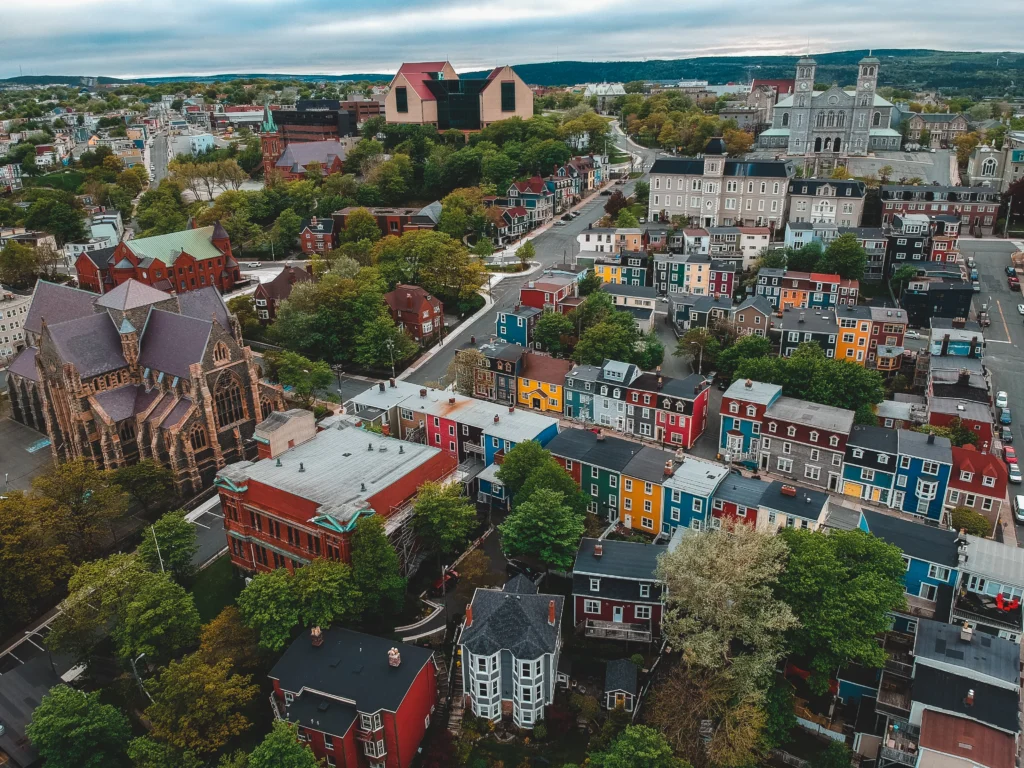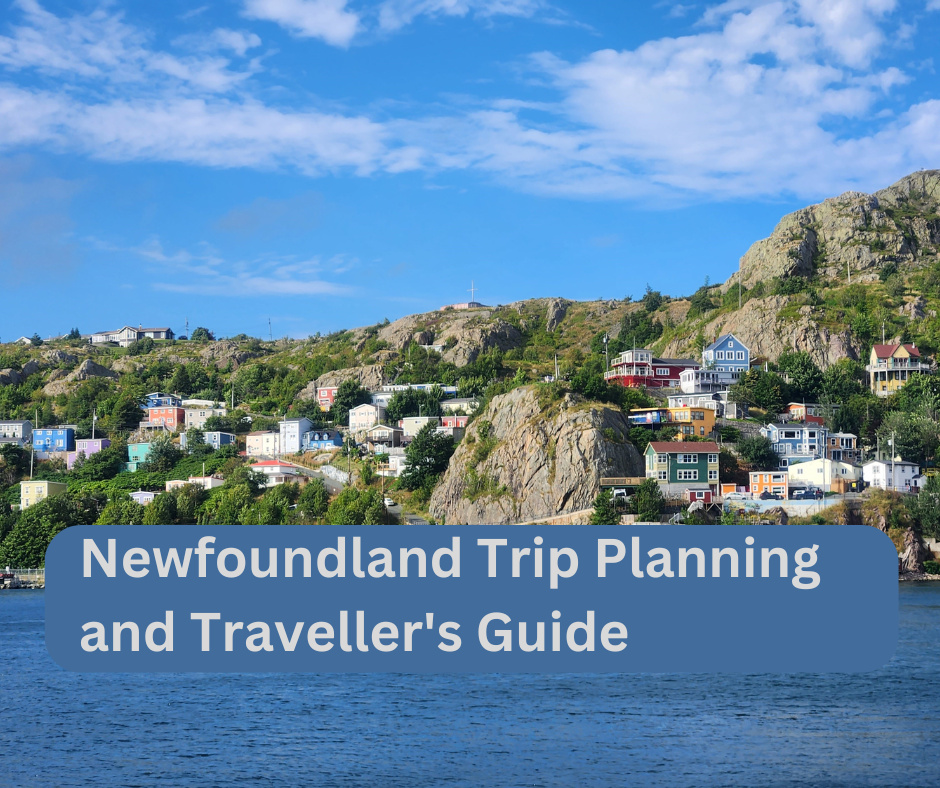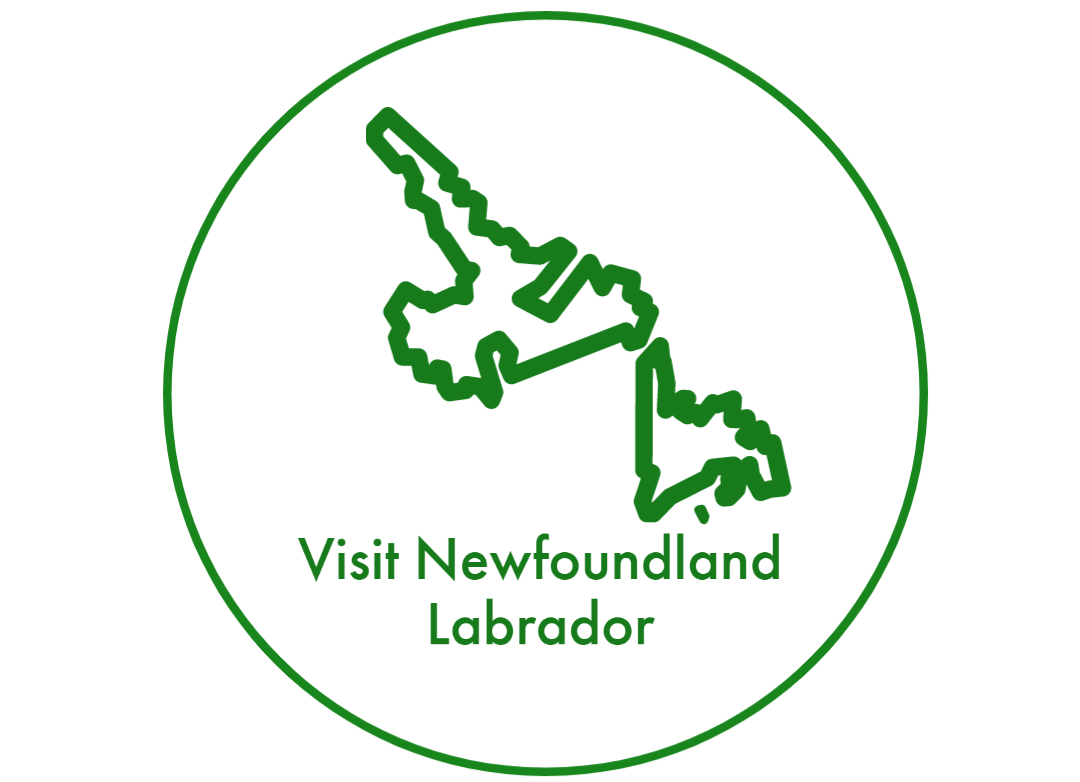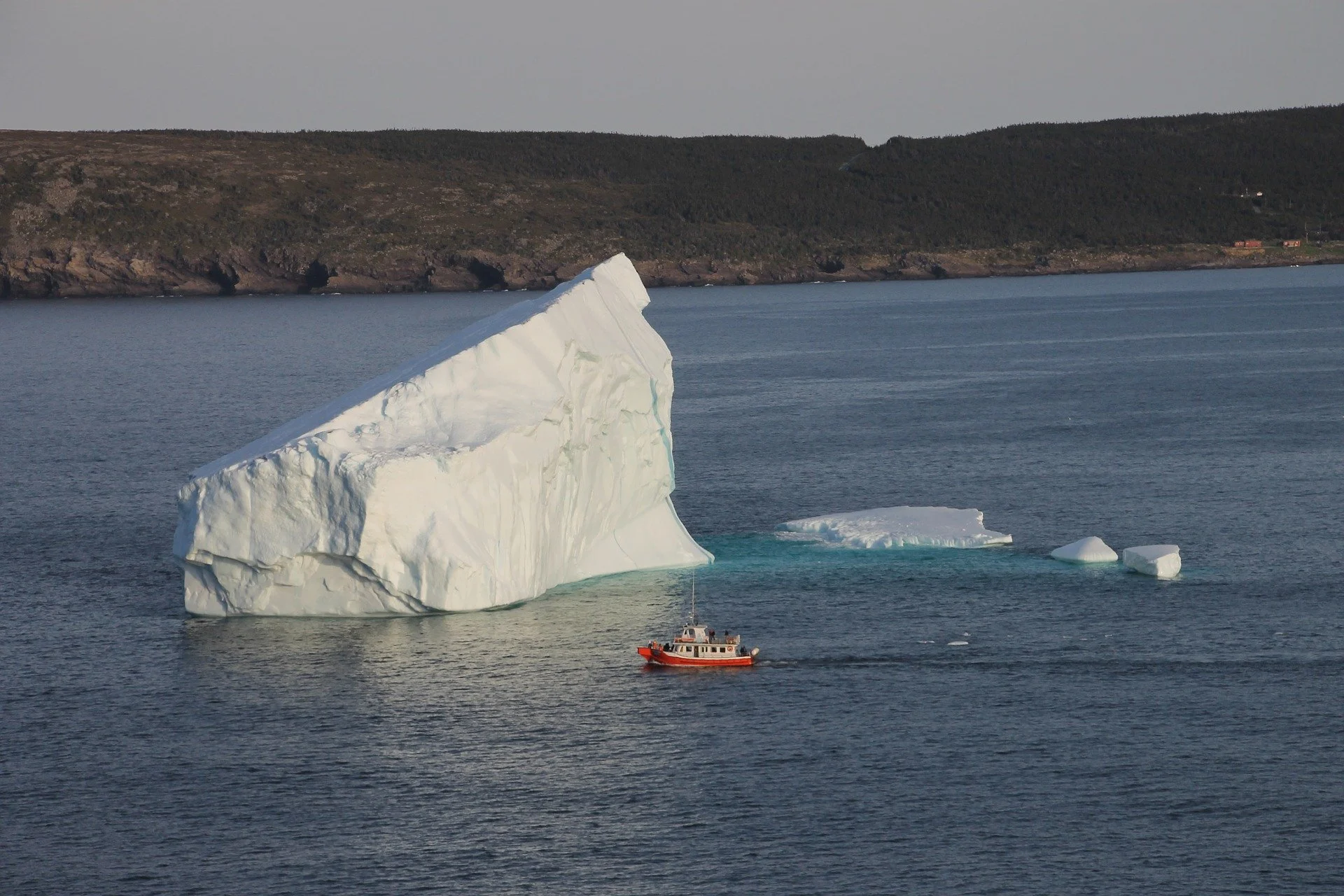How to spend 7 vacation days in Newfoundland
This is how to spend 7 vacation days in Newfoundland.
Day 1:
Visit Cape Spear national historic site, the most easterly point in North America. After you leave Cape Spear, head out to visit Witless Bay Ecological Reserve. Drive out to Ferryland. In Ferryland, you will find the Colony of Avalon and the most beautiful lighthouse built on the side of the mountain, perfect to overlook the entire bay.
Exploring Newfoundland, here is Everything You Need to Know About Traveling to Newfoundland and Labrador. Are you planning on spending time in St John’s? Here is Everything you need to know about St John’s and the Avalon Region.

Day 2:
Take a trip to Bell Island to visit the mine and museum. The Ferry will take you and your car over to the island. This is a 25-minute Ferry boat ride. Ensure you sit on the boat top deck and enjoy the coastline view of Portugal Cove.
Day 3:
Experience the Atlantic Ocean by heading out on a boat tour to watch the different whales and icebergs drift along the shoreline. This is the best way to have a close-up encounter with thousand-year-old icebergs; if you are lucky, you may see multiple whales breaching out of the water. From here, visit the closest park to have a picnic lunch or snack to relax and take the time to share your experience with your friends and family on social media.
Day 4 to 7:
Take a tour or walk around downtown St John. Be sure to visit George Street. There are a lot of jelly bean rows for you to take pictures of in the downtown area. After your downtown adventure, takes a walk around Quidi Vidi lake and venture out to see the small picturesque village. You can have lunch at the Mallard Cottage and take a guided tasting tour at the Quidi Vidi Brewery.

The best time to visit Newfoundland.
Newfoundland, with its stunning landscapes and rich cultural heritage, is a destination that beckons travellers throughout the year. Deciding on the best time to visit this Canadian gem depends on your preferences and the experiences you seek.
Summer Splendor (Best Time to Visit Newfoundland)
For those who crave mild temperatures and an abundance of outdoor activities, summer (June to August) is the prime time to explore Newfoundland. During these months, the island comes alive with vibrant wildflowers and breathtaking coastal scenery. It’s the ideal time for hiking the renowned East Coast Trail or embarking on boat tours to witness majestic icebergs drifting along the coastline.
Whale Watching Extravaganza
Late spring to early summer is also the peak season for whale watching, as humpback and minke whales migrate to Newfoundland and Labrador coastal waters. A whale-watching adventure in places like Bay Bulls or Trinity Bay promises awe-inspiring encounters with these magnificent marine creatures.
One optimal period for whale watching in Newfoundland is during the summer months, particularly from late June to early August. During this time, the waters around the island are teeming with various whale species, including humpback whales, minke whales, and orcas. The warmer temperatures create favourable conditions for these marine giants, making it an ideal time for visitors seeking an up-close encounter.
Moreover, late spring also offers excellent opportunities for whale watching. In May, as the ice begins to recede, and in September, as the waters cool down, whales migrate through Newfoundland’s coastal waters to become slower. This migration pattern provides a unique chance to witness these incredible creatures on their journey, adding extra excitement to your adventure.
Embarking on a whale-watching expedition in Bay Bulls, Newfoundland, was an inspiring and unforgettable adventure. Nestled amidst the pristine waters and breathtaking landscapes, this experience surpassed all expectations, leaving an indelible mark on our travel memories.
Our journey commenced in late June, considered one of Newfoundland optimal times for whale watching. As we set sail from the picturesque coastal town, the anticipation in the air was palpable. The knowledgeable and enthusiastic crew onboard added to the excitement, providing insightful information about the various whale species we might encounter.
Within moments, our vessel was surrounded by the vast expanse of the Atlantic Ocean, and it wasn’t long before the first majestic spray of a humpback whale’s blow caught our attention. The sheer size and grace of these marine giants as they breached and surfaced left everyone on board in awe. The experience felt almost surreal, as if we had entered a realm where nature’s grandeur unfolded before our eyes.
The tour’s highlight was witnessing a pod of orcas gracefully gliding through the waves. Their sleek black and white markings contrasted against the deep blue sea, creating a mesmerizing spectacle. The expert commentary from the guides enhanced our understanding of these incredible creatures, offering insights into their behaviours, migration patterns, and the significance of Newfoundland waters in their journey.
The boat’s captain skillfully navigated the waters, ensuring a respectful distance from the marine life while providing an up-close encounter. The excursion felt like a harmonious dance between nature and our vessel, creating a sense of symbiosis between the marine environment and our eager spectators.
In addition to the whales, the tour provided glimpses of other marine life, including playful dolphins and various seabirds. The stunning coastal scenery complemented the immersive experience, making every moment a visual feast.
Fall Foliage and Tranquility
As summer bids farewell, Newfoundland transforms into a canvas of autumnal hues. September and October bring crisp air and a kaleidoscope of colours to the landscape. This is ideal for photographers and nature enthusiasts who want to witness the changing foliage and enjoy the tranquillity before winter.
Winter Wonderland
While not as popular as the warmer seasons, winter in Newfoundland offers a unique charm. The landscape is blanketed in snow from December to February, creating a picturesque winter wonderland. Adventure seekers can try snowshoeing or cross-country skiing, while those seeking a quieter retreat can cozy up by the fireplace in a charming bed-and-breakfast.
Determining the best time to visit Newfoundland depends on your interests and the experiences you crave. Whether it’s the vibrant summer, the colourful fall, or the serene winter, Newfoundland welcomes travellers with open arms throughout the year. Each season has its allure, providing a range of experiences for every type of adventurer.
Bonus:
Take a road trip to Fort Point, a beautiful tourist attraction area. From Fort Point, you can see Trinity and Trinity East clearly. Fort Point is the perfect area to take pictures. From here, drive to Trinity and Sail along glacier icebergs for up to one hour at Trinity Eco-Tours local boat tours company.
Between May and July, you will find some of the most majestic glacier bergs, whales, and sea birds along the coastline of Newfoundland and Labrador. While in Trinity, Visit Mercantile Premises Provincial Historic Site and Hiscock House Provincial Historic Site. Experience a clear view of the Atlantic Ocean by heading out on a hike on Skerwink Trail along the shoreline. One of the best ways to experience the eastern region is by hiking on foot. From here, have a picnic lunch, take some time to relax, take pictures, and share your experience with your friends and family on social media.
Bonus:
Visit Burin Peninsula Fortune Head Ecological Reserve is one of the best hiking places. You will see different fossil formations in the rocks. During the summer you can see whales in the distance from the beach. Provincial Seamen’s Museum This is a great place to visit with kids. The museum displays different artifacts, tools, and objects commonly used at sea for fishing. The artifacts show that the people of Newfoundland and Labrador used the land and sea to thrive. Grand Bank Historic Lighthouse and Waterfront This lighthouse is located on the waterfront overlooking the harbour. This is a great place to take pictures and enjoy the waterfront scenery in Grand Bank. Winterland Eco-museum This outdoor nature museum is unique to the Burin Peninsula. Most of the walking area is wheelchair accessible.
Marystown Heritage Museum: This small indoor museum offers many different pictures and artifacts that capture some of Newfoundland and Labrador’s history.
More ways to explore Newfoundland and Labrador.
Travelling to Newfoundland and Labrador. Travelers also ask.

Is St. John’s, Newfoundland, worth visiting?
St. John’s, the capital, is worth visiting. St. John’s offers a rich cultural heritage, a vibrant arts scene, and breathtaking natural landscapes. Known for its colourful row houses, historic sites like Signal Hill, and picturesque harbour, St. John’s provides a unique blend of natural beauty. The city’s friendly locals, lively music scene, and excellent seafood add to its charm, making it a must-visit destination.
What is St. John’s, Newfoundland, famous for?
St. John’s is famous for several things:
- Signal Hill: This historic site offers panoramic views, and the Cabot Tower is where the first transatlantic wireless communication was received.
- George Street is renowned for its nightlife, with the most bars and pubs per capita in North America.
- Colourful Row Houses: Known as Jellybean Row, these brightly painted homes are iconic.
- Rich History: As one of the oldest cities in North America, it has a rich maritime history and cultural heritage.
How many days does it take to visit St. John’s, Newfoundland?
To fully experience St. John’s and its surroundings, a visit of 4 to 5 days is recommended. This allows time to explore the city’s historical sites, enjoy the local cuisine, enjoy the nightlife on George Street, and venture out to nearby natural attractions such as Cape Spear and Quidi Vidi Village.
Is St. John’s, Newfoundland, a walkable city?
Yes, St. John’s is a walkable city, especially in the downtown area, where many attractions, restaurants, and shops are concentrated. The city’s hilly terrain can be challenging, but it also offers beautiful vistas and charming streets to explore on foot.
What is the best month to visit Newfoundland?
The best months to visit Newfoundland are from late June to early September. The weather is milder during this period, and you can enjoy outdoor activities like hiking, whale watching, and iceberg spotting. July and August are viral for tourists.
What is the best time of year to visit St. John’s, Newfoundland?
The best time to visit St. John’s is during the summer, from June to early September, during this this time the weather is warm and many festivals and events occur. This is also the peak season for whale-watching and iceberg viewing.
Is St. John’s Newfoundland expensive?
St. John’s can be moderately expensive, especially during peak tourist season. Accommodation, dining, and activities can add up, but budget-friendly options are also available. Compared to larger Canadian cities, St. John’s is relatively affordable.
Is Newfoundland expensive to visit?
Newfoundland is not excessively expensive to visit, but costs can vary depending on the time of year and type of accommodation. While certain activities and dining experiences may be costly, there are plenty of free or low-cost activities to enjoy.
What is the famous street in St. John’s, Newfoundland?
George Street is famous in St. John’s for its vibrant nightlife and numerous bars and pubs. George Street is a popular spot for locals and tourists looking to experience live music and socialize.
Can you get around St. John’s without a car?
Yes, you can get around St. John’s without a car, especially downtown, where many attractions are within walking distance. You’ll have access to convenient transportation options, such as public transportation, taxis, and ride-sharing services.
How long is the ferry ride from Nova Scotia to St. John’s, Newfoundland?
There is no direct ferry to St. John’s. However, you can take a ferry from North Sydney, Nova Scotia, to either Argentia (a 16-hour ride) or Port aux Basques (a 6–8-hour ride) in Newfoundland. From there, you must drive to St. John’s, which takes approximately 1.5 hours from Argentia or 9 hours from Port aux Basques.
How long does it take to drive around St. John’s?
Driving around St. John’s can take about an hour, depending on traffic and stops. Exploring the greater St. John’s area, including nearby attractions like Cape Spear and Quidi Vidi, can take several hours.
What is the crime rate in St. John’s, Newfoundland?
St. John’s has a relatively low crime rate compared to other Canadian cities. While it experiences typical urban crime, it is generally considered a safe place for residents and visitors.
How cheap is Newfoundland?
Newfoundland is relatively affordable compared to other parts of Canada. While some areas, especially St. John’s, can be expensive, smaller towns and rural areas, however, offer more budget-friendly options for accommodation and dining.
What is the best way to tour Newfoundland?
The best way to tour Newfoundland is by car. This allows you to explore the island’s diverse landscapes, remote villages, and natural attractions at your own pace. Renting a car is recommended if you’re flying into the province.
In what month do you see icebergs in Newfoundland?
Iceberg season in Newfoundland typically runs from late May to early June, though icebergs can sometimes be seen as late as July. The best month for iceberg viewing is usually June.
What is the best month to see icebergs in Newfoundland?
June is generally the best month to see icebergs in Newfoundland. This is when most icebergs drift along the coast, providing spectacular viewing opportunities.
When can I see puffins in Newfoundland?
Puffins can be seen in Newfoundland from late May to early September. The best months to see them are June and July when they are most active during their breeding season.
What is the wettest month in Newfoundland?
October is typically the wettest month in Newfoundland, and it experiences the highest average rainfall.
When can you see whales in St John’s, Newfoundland?
Whale-watching season in St. John’s is from mid-June to mid-August. During this time, humpback, minke, and other whale species migrate through the waters of Newfoundland.
What should I pack for St. John’s, Newfoundland?
When visiting St. John’s, pack layers to accommodate varying weather conditions. Essentials include:
- Waterproof jacket and footwear
- Warm clothing (sweaters, hats, gloves)
- Comfortable walking shoes
- Sunscreen and sunglasses
- Cameras and binoculars for wildlife and iceberg viewing
Can you see the Northern Lights from Newfoundland?
You can watch the Northern Lights (Aurora Borealis) from Newfoundland, particularly in low-light pollution areas. The best time to see them is from late fall to early spring.
Where is the best place to see whales and icebergs in Newfoundland?
Twillingate and Bonavista are Newfoundland best places to see whales and icebergs. These coastal areas offer excellent viewing opportunities and tours.
Are there polar bears in Newfoundland?
Polar bears are occasionally seen in the northern parts of Newfoundland and Labrador, particularly in the Labrador region. They are not commonly found in Newfoundland itself.
How long does it take to drive from one end of Newfoundland to the other?
Driving from the western end of Newfoundland (Port aux Basques) to the eastern end (St. John’s) takes approximately 9–10 hours without significant stops.
Is Fogo Island worth visiting?
Fogo Island is worth visiting for its unique culture, stunning landscapes, and renowned Fogo Island Inn. It offers a distinctive experience of Newfoundland’s heritage and natural beauty.
How often can you see northern lights in Newfoundland?
The Northern Lights can be seen in Newfoundland several times a year, particularly during periods of high solar activity. The best times are during winter when nights are longer and darker.
What is the best time to see the Northern Lights?
The best time to see the Northern Lights is during the winter, from late September to early April, particularly around midnight or early morning.
How long is the ferry ride to Fogo?
The ferry ride to Fogo Island from Farewell, Newfoundland, takes approximately 45 minutes to an hour.
How much is the ferry to Fogo Island?
As of the latest information, the ferry to Fogo Island costs around $15–20 CAD per vehicle and additional fees for passengers, but prices can vary, so it’s best to check current rates.
What is so special about Fogo Island?
Fogo Island is unique for its rugged natural beauty, traditional outport culture, and the acclaimed Fogo Island Inn. It’s known for its artistic community, distinctive architecture, and stunning coastal Scenery.
Are there narwhals in Newfoundland?
Narwhals are typically found in Arctic waters and are uncommon in Newfoundland.
Are there dolphins in Newfoundland?
Yes, dolphins can be seen in the waters around Newfoundland, including species like the Atlantic white-sided dolphin and the common dolphin.
Are there killer whales in Newfoundland?
Killer whales (orcas) are occasionally sighted around Newfoundland, especially during summer.
What is Cape Spear known for?
Cape Spear is known for being the easternmost point in North America. It features a historic lighthouse and offers stunning 180-degree views of the Atlantic Ocean, making it a popular tourist spot.
Where can I see whales in Newfoundland?
Some of the best places to see whales in Newfoundland include:
- St. John’s and Cape Spear
- Trinity and Bonavista
- Twillingate
- Witless Bay Ecological Reserve
How do you see puffins in St John’s?
To see puffins near St. John’s, visit the Witless Bay Ecological Reserve island, which is home to large colonies of puffins. Boat tours from Bay Bulls can take you close to the puffin nesting sites.
How long do you need to see Newfoundland?
Plan to spend at least 7–19 days to see Newfoundland highlights. This allows enough time to explore St. John’s, the Avalon Peninsula, Gros Morne National Park, and other key attractions.
When should I go to Newfoundland?
The best time to visit Newfoundland is from late June to early September when the weather is mild. You can enjoy outdoor activities, events, and festivals. This period is also ideal for whale-watching and iceberg-viewing.
These Are The Travel Planning Resources You Should Use
Looking to book your trip to Newfoundland and Labrador? Use these resources that are tried and tested by other travellers like you who vacation in Newfoundland and Labrador. Bookmark these links. Save them for future reference.
Booking Flights, Hotels or B&B: Start planning your next vacation trip by finding the best flight, hotel or b&b deals. Book Here
Finding things to do in Newfoundland and Labrador on TripAdvisor and Viator is not hard. You can enjoy boat tours, whale watching, iceberg watching, kayaking and other activities. Book all these activities on
You can also find low prices on hotels, B&B and cabins with these two providers. If you are located in Canada, the USA, the UK or Europe, use Booking.com, and if you are in Canada, the USA or anywhere else, use TripAdvisor.
Car Rental: Here is what we recommend:
When you book with Rentalcars.com, you can compare the price and find the best vehicle for your trip. Economybookings.com Display all their vehicle on the website with a detailed description. They display high-quality photos and a user rating as well. Qeeq.com serves road trip travellers like you from different countries by working with car rental companies worldwide.
Get compensated if your flight is delayed or cancel
AirHelp and Compensateair will help you with flight delays, cancellations, or denied boarding. All you need to do is to submit your flight details, and they will handle the claim process on your behalf. They will handle all the paperwork, airline negotiations, and legal proceedings.
Do you need more help planning your trip?
Check out our Resources Page, where we also highlight all the resources and companies you can use to assist with your planning.



